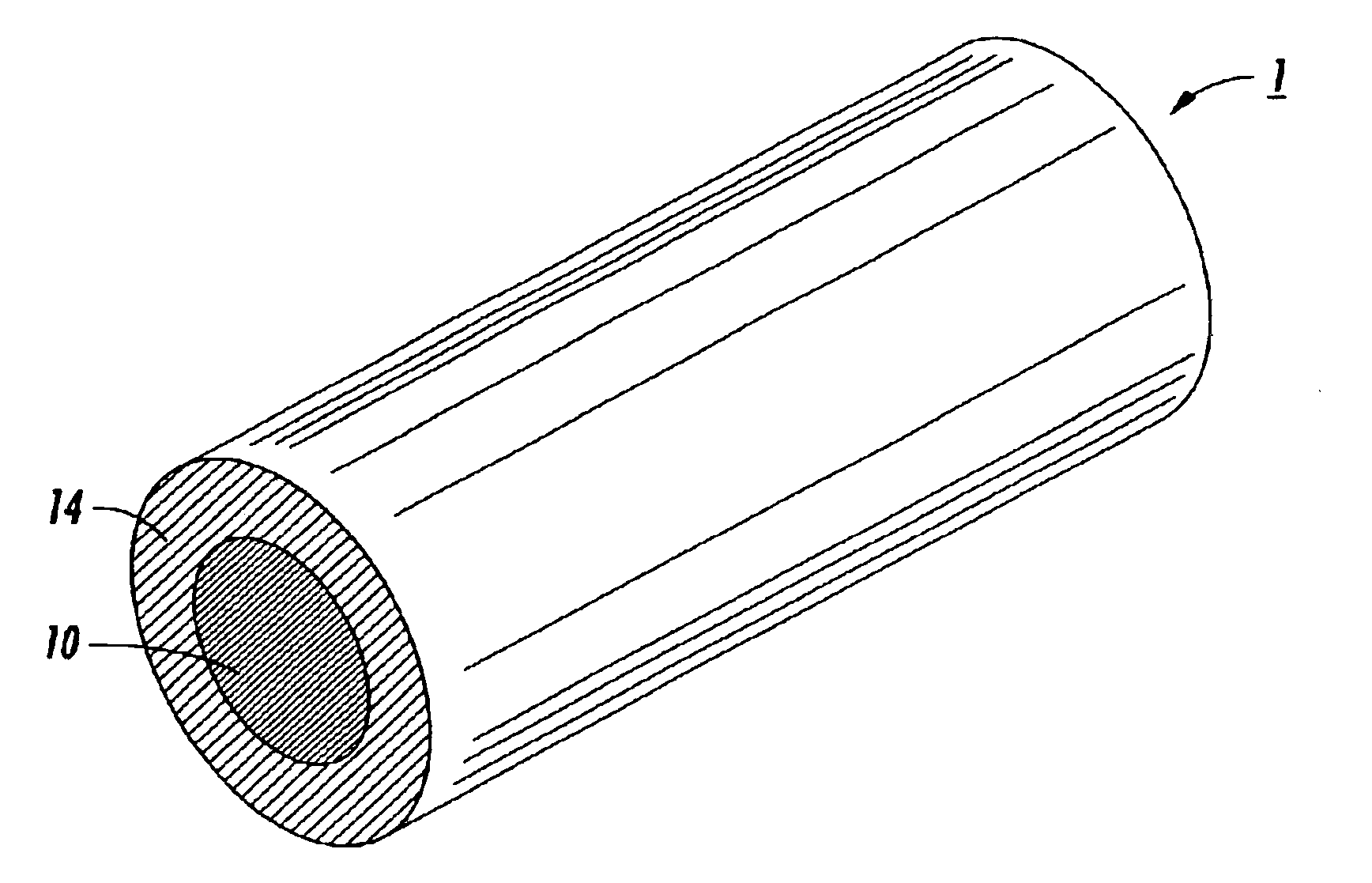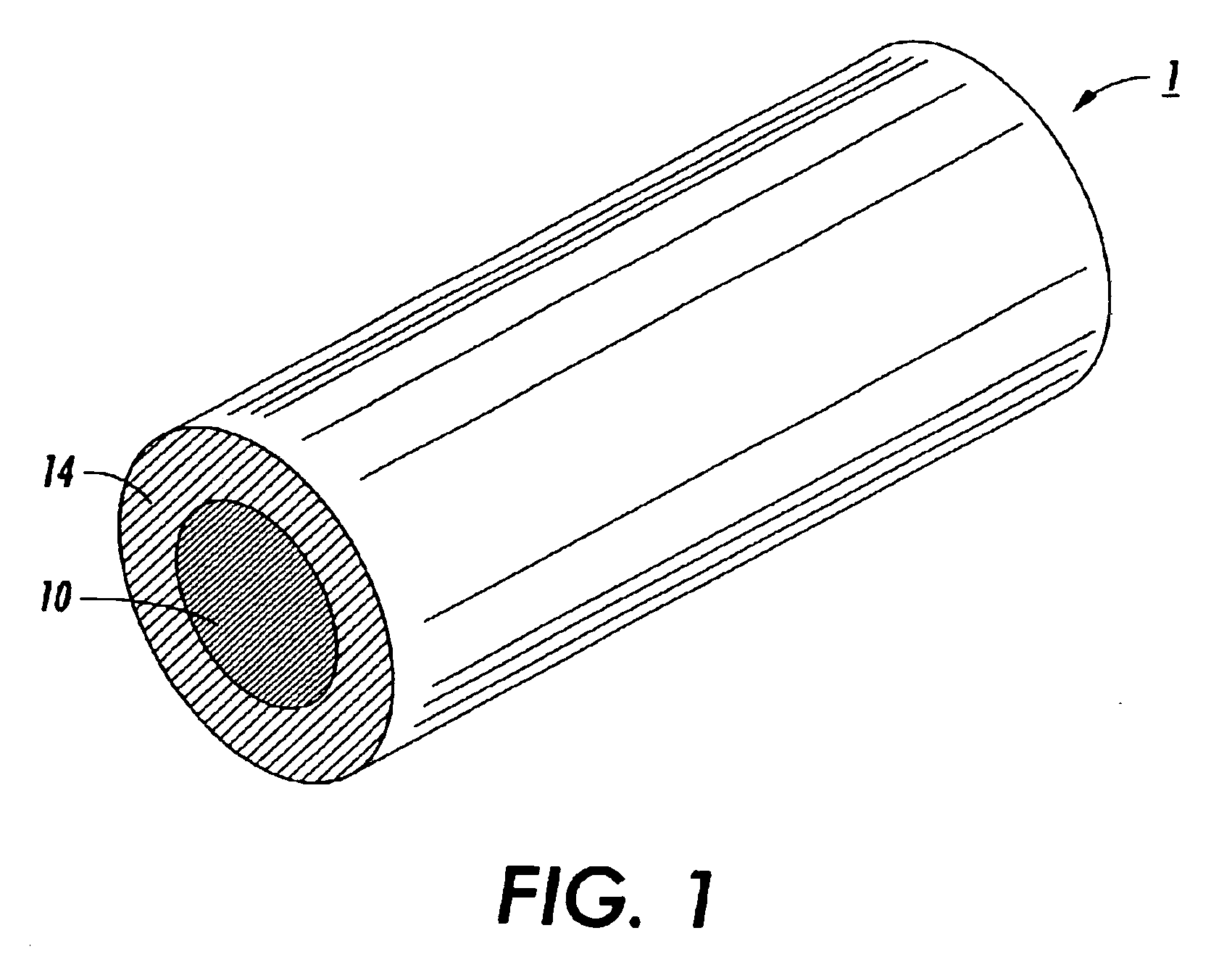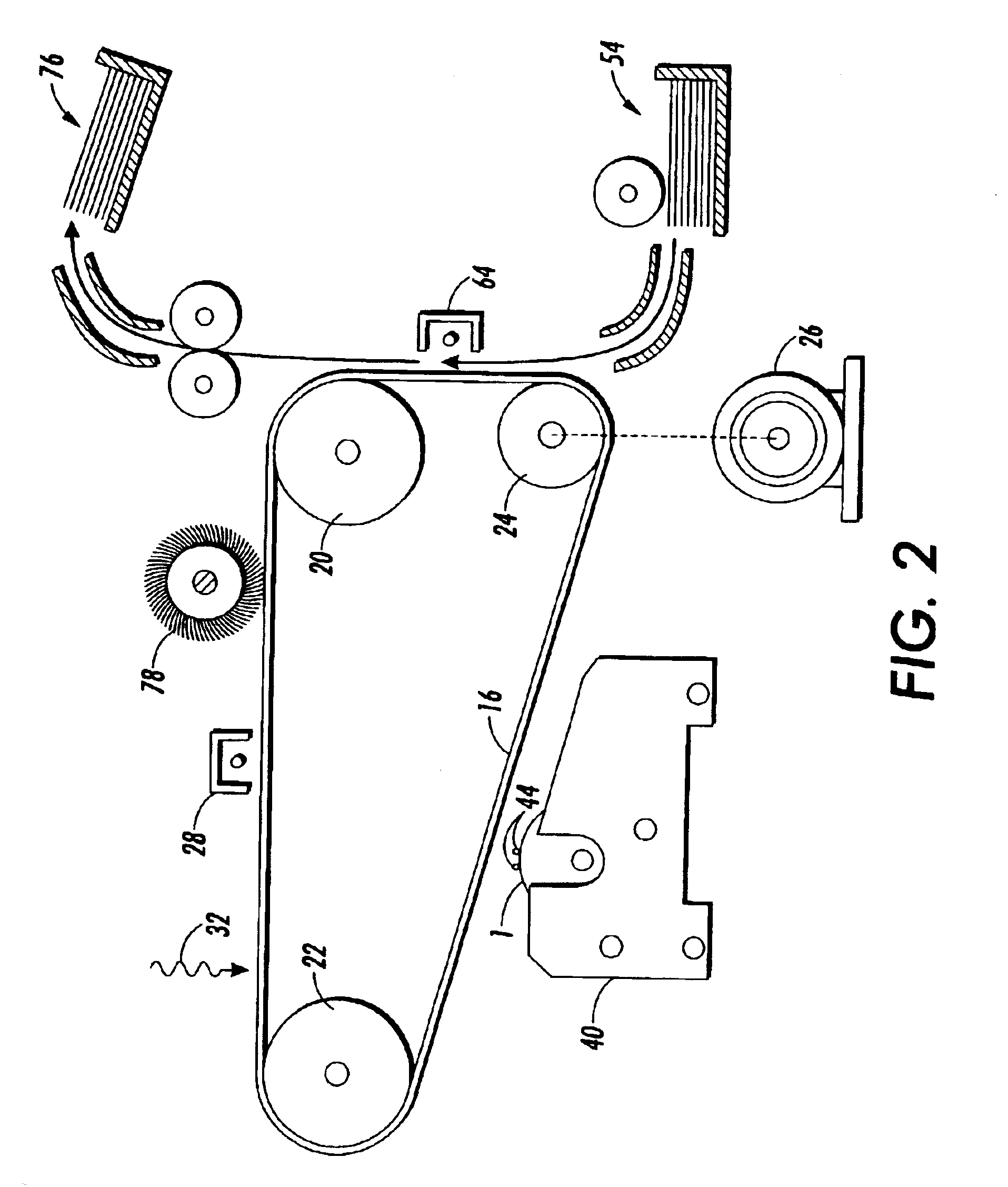Charging member having titanium oxide outer coating on grit blasted substrate
a charging member and titanium oxide technology, applied in the direction of electrographic process apparatus, instruments, optics, etc., can solve the problems of hazardous and possibly explosive products, near-by ablation, and inability to quantify,
- Summary
- Abstract
- Description
- Claims
- Application Information
AI Technical Summary
Benefits of technology
Problems solved by technology
Method used
Image
Examples
example i
Preparation of Titanium Dioxide Plasma Coated Roller Substrate
[0057]A suitable roller substrate or core was selected and constructed of seamless 302 stainless steel. This steel was chosen for its machine-ability, mechanical properties, and non-magnetic properties. The roller's physical dimensions do not appear to be critical to formation of a satisfactory titanium dioxide ceramic layer, because a variety of roller dimensions produced satisfactory coating in accordance with the present invention. Suitable alternative substrates include any other steels or materials that function similarly or better than the exemplary 302 stainless. Other suitable materials are metals, composites, ceramics, and the like materials that can withstand elevated temperatures and minimize thermal expansion.
[0058]The sleeve was turned on a lathe, by staging it on the inside diameter. The outside diameter was machined. The surface of the sleeve was then grit-blasted with 80 aluminum oxide grit to a suitable s...
example ii
Preparation of Bond Coat
[0059]Although a bond coat is not required, it is possible to use one to enhance adhesion of the coating to the roller or sleeve. A chrome aluminum yttrium cobalt powder, commercially available from Praxair as CO-106-1, can be plasma sprayed over a grit-blasted steel substrate according to manufacturer recommended spray parameters accompanying the powder. This would be followed by an optional plasma spray mid-coat consisting of a 1:1 by volume mixture of chrome aluminum yttrium cobalt powder and titanium dioxide commercially available from Sulzer Metco as 102. Other commercially available bond coats are believed to be useful for either or both bond or mid-coating.
example iii
Titanium Oxide Ceramic Coating
[0060]A plasma spray coating of the TiO2 ceramic layer was accomplished with Praxair Thermal Spray Equipment using a SG 100 torch. Plasma gases included: primary gas of argon (at 91 standard cubic feet per hour or “SCFH”), and secondary gas of helium (at 35 SCFH). Carrier flow was also argon gas at 9 SCFH. The metal oxide was titanium dioxide from FJ Brodman Co. having a powder size range of from about 10 to about 75 microns. A gun current level of 900 amps was sufficient to melt the powder. Alternative plasma coating approaches can use other equipment, gases, and / or powder particle sizes, wherein parameters are adjusted accordingly to achieve the same or similar result. For example, High Velocity Oxy Fuel (HVOF) or other thermal spray processes are believed to be adaptable and satisfactory to achieving comparable and equivalent coating results.
PUM
| Property | Measurement | Unit |
|---|---|---|
| particle size | aaaaa | aaaaa |
| particle size | aaaaa | aaaaa |
| thickness | aaaaa | aaaaa |
Abstract
Description
Claims
Application Information
 Login to View More
Login to View More - R&D
- Intellectual Property
- Life Sciences
- Materials
- Tech Scout
- Unparalleled Data Quality
- Higher Quality Content
- 60% Fewer Hallucinations
Browse by: Latest US Patents, China's latest patents, Technical Efficacy Thesaurus, Application Domain, Technology Topic, Popular Technical Reports.
© 2025 PatSnap. All rights reserved.Legal|Privacy policy|Modern Slavery Act Transparency Statement|Sitemap|About US| Contact US: help@patsnap.com



